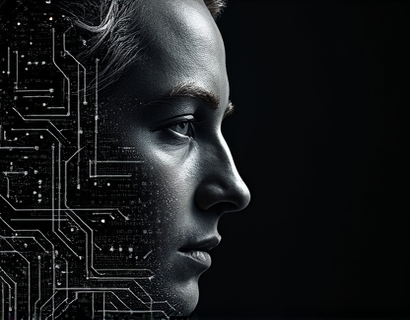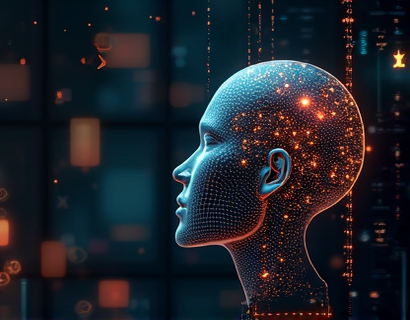Transforming Architectural Knowledge with AI-Driven Chat Interfaces
The integration of artificial intelligence in the field of architecture is ushering in a new era of interactive and accessible learning. An AI-driven chat interface is revolutionizing how users, including students, educators, and professionals, engage with architectural knowledge. This innovative approach not only provides expert insights but also ensures a safe and educational environment for all users, particularly children and students. The focus is on delivering accurate and reliable content that fosters learning and professional development in the architecture sector.
Enhancing Educational Experiences
The traditional methods of learning architecture can be daunting and often inaccessible to those who are just starting their journey. An AI-powered chat interface changes this landscape by offering a dynamic and interactive platform. Users can ask questions, receive detailed explanations, and explore complex concepts in real-time. This real-time interaction makes learning more engaging and effective, catering to various learning styles and paces.
For students, this means having a constant companion that can answer queries about architectural principles, design theories, and industry practices. Educators can also leverage this technology to create personalized learning paths for their students, ensuring that each learner receives the support they need to succeed. The chat interface can be tailored to different levels of expertise, from beginner to advanced, making it a versatile tool for educational institutions.
Ensuring Safety and Accessibility
One of the most significant advantages of an AI-driven chat interface in architecture is its commitment to safety and accessibility. Content is rigorously verified to ensure accuracy and reliability, which is crucial for educational purposes. This verification process involves cross-referencing information from trusted sources and adhering to industry standards and best practices. By doing so, the chat interface becomes a trusted resource for users of all ages.
For children and students, the chat interface is designed to be child-friendly and safe. The content is filtered to exclude any inappropriate or complex information, ensuring that young users can explore architectural concepts without encountering harmful or confusing material. This makes the platform an ideal resource for schools and educational programs aiming to introduce architecture to younger audiences.
Specialized Information for Professionals
Professionals in the architecture field can also benefit greatly from an AI-driven chat interface. The platform provides specialized information tailored to their needs, covering a wide range of topics from design and construction to sustainability and urban planning. Users can engage in detailed discussions, ask for recommendations, and receive insights from experts in the field.
The chat interface can be programmed to understand and respond to technical queries with precision, offering solutions and suggestions based on the latest industry trends and research. This not only saves time but also ensures that professionals stay updated with the latest developments in their field. The ability to access expert-level information through a user-friendly chat interface is a game-changer for architectural practices.
Fostering Collaboration and Community
An AI-driven chat interface in architecture is not just a tool for individual learning but also a platform for collaboration and community building. Users can connect with peers, share projects, and engage in discussions that foster a sense of community. This collaborative environment encourages the exchange of ideas and best practices, leading to innovative solutions and advancements in the field.
For students and young professionals, the chat interface serves as a networking tool, helping them build connections with industry experts and like-minded individuals. This can lead to mentorship opportunities, job prospects, and collaborative projects that enhance their learning and career growth. The platform can also host virtual events, webinars, and workshops, further enriching the educational experience.
Innovative Design and User Experience
The design of the AI-driven chat interface is crucial to its success. A user-friendly and intuitive interface ensures that users of all technical backgrounds can navigate the platform with ease. The design should be clean, modern, and visually appealing, with clear navigation and responsive elements that work seamlessly on various devices.
For educational purposes, the interface can include features such as interactive diagrams, 3D models, and multimedia content to enhance the learning experience. These visual aids help users better understand complex architectural concepts and designs. The chat interface can also support multiple languages, making it accessible to a global audience and promoting inclusivity.
Continuous Learning and Adaptation
The architecture industry is constantly evolving, with new technologies, materials, and design philosophies emerging regularly. An AI-driven chat interface must be capable of adapting to these changes to remain a valuable resource. This involves continuous learning and updates based on the latest research, industry reports, and user feedback.
The chat interface can be programmed to learn from user interactions, improving its responses and recommendations over time. This adaptive learning ensures that the platform remains relevant and useful, providing users with the most up-to-date and accurate information. For educators, this means the platform can evolve alongside curriculum changes and new educational approaches.
Building Trust Through Transparency
Trust is essential in any educational tool, especially one that provides expert-level information. To build and maintain trust, the AI-driven chat interface should be transparent about its sources and methods. Users should have access to information about the data used to train the AI, the algorithms employed, and the verification processes in place.
Transparency also extends to the chat interface's limitations. Users should be informed about the types of questions the AI can and cannot answer, ensuring realistic expectations. This transparency helps users make informed decisions and encourages them to use the platform as a supplement to traditional learning resources.
Conclusion
The integration of AI-driven chat interfaces in architecture represents a significant leap forward in educational and professional development. By providing a safe, educational, and innovative platform, these chat interfaces empower users to explore and understand the complex world of architecture. Whether for students, educators, or professionals, the benefits of such a tool are vast, offering a blend of expert insights, interactive learning, and community support. As technology continues to advance, the potential for AI in architecture education and practice is limitless, paving the way for a more informed and skilled future generation of architects.









































